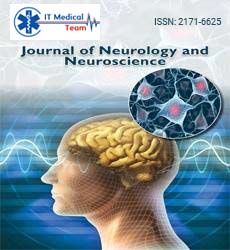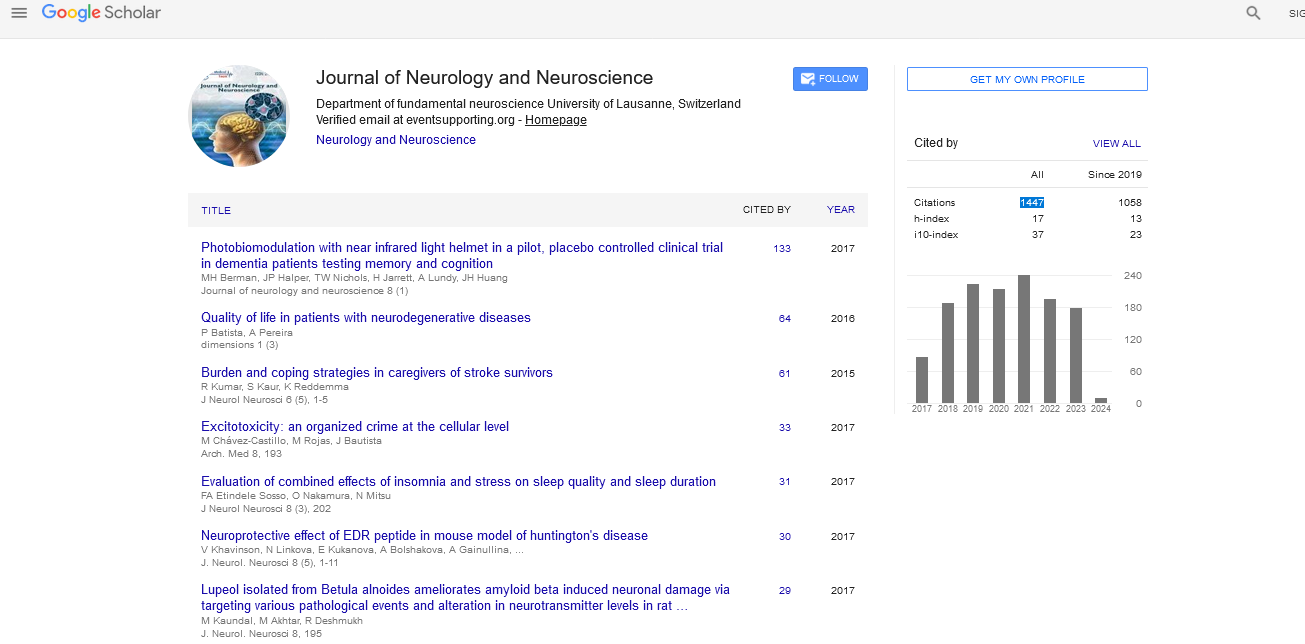Perspective - (2025) Volume 16, Issue 3
The Role of Detachable Coils in the Management of Arteriovenous Malformations
Renima Lenimn*
Department of Medicinal and Health Products Sciences, University of Pisa, Pisa, Italy
*Correspondence:
Renima Lenimn, Department of Medicinal and Health Products Sciences, University of Pisa,
Italy,
Email:
Received: 27-May-2025, Manuscript No. ipjnn-25-15717;
Editor assigned: 29-May-2025, Pre QC No. P-15717;
Reviewed: 12-Jun-2025, QC No. Q-15717;
Revised: 17-Jun-2025, Manuscript No. R-15717;
Published:
24-Jun-2025
Introduction
Detachable coils have become invaluable tools in the endovascular management of Arteriovenous Malformations (AVMs) and fistulas, offering precise control over deployment, improved safety, and targeted occlusion especially in high flow or anatomically complex lesions. Originally developed by Guglielmi as platinum electrolytic coils for intracranial aneurysms, these coils enable repositioning before final detachment, reducing the risk of inadvertent embolization or migration. Early feasibility work in experimental swine AVM models demonstrated that detachable platinum electrodes could be delivered deep within the nidus, conform to tight angulated vessels, and significantly diminish flow when multiple coils were released—all with excellent radiographic control and minimal trauma. Translating to clinical practice, studies in both intracranial and cervical high flow fistulas have confirmed that Guglielmi Detachable Coils (GDCs) afford superior placement control, allow repositioning or retrieval prior to detachment, and achieve durable fistula closure—with angiographic obliteration rates approaching 92–100% and low recurrence over multiyear follow up. Particularly in lesions with complex nidus architecture or high flow, coils serve as anchoring scaffolds, enabling subsequent injection of liquid embolic agents (e.g. Onyx or NBCA) using a “plug and push” strategy, enhancing penetration and reducing distal reflux risk this approach has been described in cerebral AVMs using dual microcatheter techniques where detachable coils stabilized flow before Onyx injection [1].
Description
In peripheral AVMs, such as pelvic or extremity lesions with dominant draining veins, coil embolization of the venous outflow—often combined with ethanol or sclerotherapy—has demonstrated excellent safety and efficacy. A recent retrospective series of 13 patients with type IIa pelvic AVMs managed by transvenous coil embolization (no liquid agent) achieved technical success rates above 90%, symptom improvement in all, and angiographic occlusion in over 75% of cases without major complications. Similarly, coil-assisted occlusion of dominant outflow veins in lower extremity AVMs combined with ethanol achieved complete or substantially partial resolution in all treated patients, with no major adverse events, supporting the role of detachable coils in hybrid embolization strategies [2].
Detachable coil technology also addresses procedural challenges in tortuous vascular anatomy. Recent innovations such as coils with early detachment mechanisms and triaxial delivery systems allow controlled deployment even when catheter positioning is suboptimal, expanding treatable lesion types and improving operator ergonomics. Importantly, in high-flow AVMs or fistulas, the ability to reposition coils before detachment dramatically reduces risks of coil migration—a known complication in pushable coils or liquid embolics—and contributes to durable occlusion. One of the most common uses of detachable coils is to occlude specific arterial feeders supplying the AVM nidus. This is particularly effective in cases where a single or limited number of feeding arteries contribute to the malformation. Coil embolization reduces blood flow into the nidus, minimizing the risk of rupture and making subsequent surgery or radiosurgery safer. Coils are frequently used to decrease AVM vascularity before microsurgical resection [3].
Preoperative embolization lowers intraoperative blood loss, shortens operative time, and facilitates complete resection. Coils are especially helpful for deep or eloquently located AVMs where surgical access is limited. In large AVMs that are less responsive to stereotactic radiosurgery alone, coils can be used to reduce nidus volume and normalize hemodynamics. This downstaging increases radiosurgical efficacy and reduces the latency period during which hemorrhage risk persists. In selected small AVMs with accessible feeding vessels and favorable angioarchitecture, complete occlusion using coils alone or in combination with liquid agents (e.g., n-BCA, Onyx) may be possible. While less common, this approach can provide definitive treatment in carefully selected cases. AVMs are often associated with high-flow aneurysms in feeding arteries. These aneurysms can rupture independently of the AVM. Detachable coils are highly effective in occluding these aneurysms, thereby reducing hemorrhage risk while preserving flow to the AVM if needed [4].
Beyond individual lesion targeting, detachable coils play a strategic adjunctive role in multimodal AVM therapy. In cerebral AVMs, coils are often used to create a proximal scaffold (the anchor coil technique) to permit controlled deposition of Onyx into the nidus—limiting reflux and improving penetration—facilitating subsequent microsurgical resection or radiosurgery if needed. Compared with liquid agents alone, detachable coils permit staged embolization in high-risk regions, including eloquent brain areas or lesions with multiple small feeders, where precise occlusion is critical. While detachable coils offer significant advantages, there are limitations: they are more expensive and require longer setup times than pushable coils or liquid agents; navigating highly tortuous distal feeding arteries remains technically demanding; and dense network nidus occlusion may demand a large coil burden that prolongs procedure time and fluoroscopy exposure. Nevertheless, for high-flow anatomy or where precision matters most—such as intracranial AVMs, dural arteriovenous fistulas, and pelvic venous malformations—the benefits often outweigh these drawbacks [5].
Conclusion
In summary, detachable coils hold a central role in AVM management owing to their controlled deployment, repositionability prior to detachment, and compatibility with adjunct embolic techniques. They achieve high rates of technical success and durable clinical benefit in both intracranial and peripheral AVMs, particularly in high-flow lesions or when nidus architecture is complex. They serve not only as primary embolic agents but also as anchoring elements that enhance the safety and efficacy of liquid embolic delivery. While further comparative studies and long-term follow-up data across varied AVM subtypes are awaited, current evidence firmly supports the continued and expanding use of detachable coil technology in AVM treatment algorithms.
Acknowledgment
None.
Conflict of Interest
None.
References
- Stockton RA, Shenkar R, Awad IA, et al. Cerebral cavernous malformations proteins inhibit Rho kinase to stabilize vascular integrity. J Exp Med. 2010;207(4):881-896.
Google Scholar, Cross Ref, Indexed at
- Cullere X, Plovie E, Bennett PM, et al. The cerebral cavernous malformation proteins CCM2L and CCM2 prevent the activation of the MAP kinase MEKK3. Proc Natl Acad Sci. 201;112(46):14284-14289.
Google Scholar, Cross Ref, Indexed at
- Draheim KM, Fisher OS, Boggon TJ, et al. Cerebral cavernous malformation proteins at a glance. Journal of cell science. 2014 Feb 15;127(4):701-7.
Google Scholar, Cross Ref, Indexed at
- Baranoski JF, Kalani MY, Przybylowski CJ, et al. Cerebral cavernous malformations: review of the genetic and protein–protein interactions resulting in disease pathogenesis. Front Surg. 2016;3:60.
Google Scholar, Cross Ref, Indexed at
- Kar S, Samii A, Bertalanffy H. PTEN/PI3K/Akt/VEGF signaling and the cross talk to KRIT1, CCM2, and PDCD10 proteins in cerebral cavernous malformations. Neurosurg Rev. 2015;38(2):229-237.
Google Scholar, Cross Ref, Indexed at





